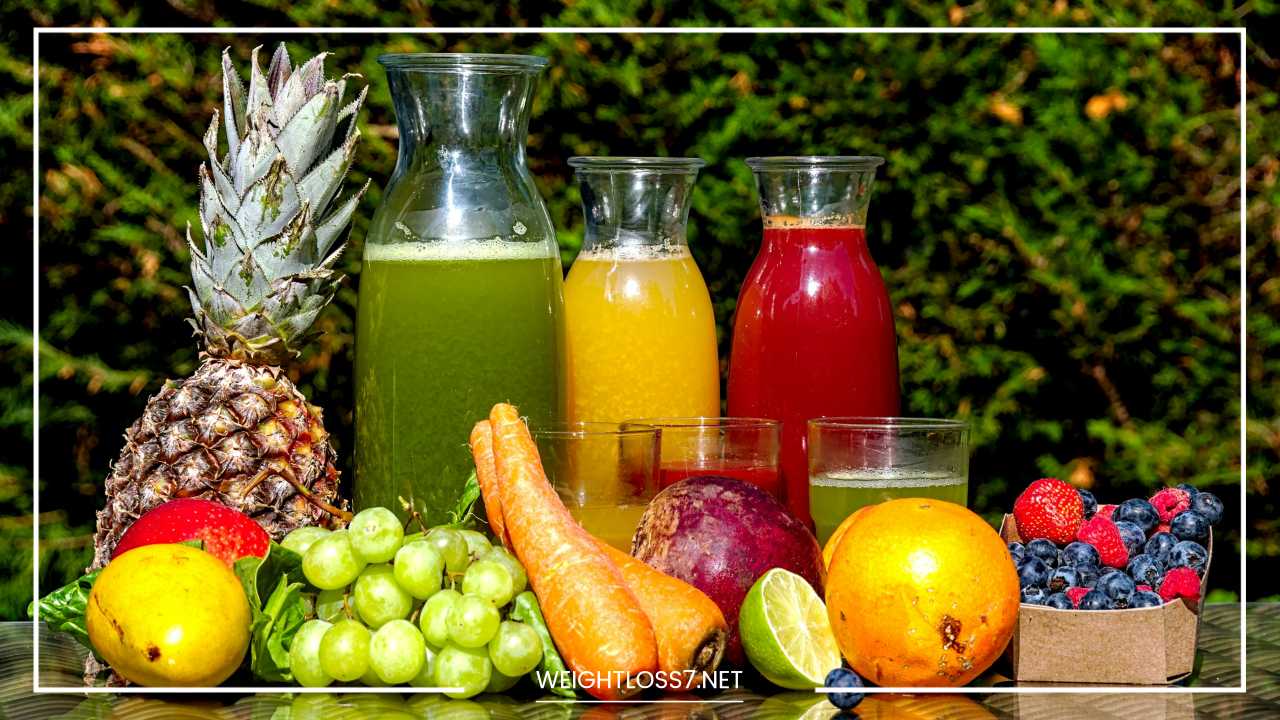Fruit Juice: Beyond the Hype – A Science-Backed Guide

Fruit Juice
Fruit Juice: A Refreshing Journey Through Health, Hype, and How-To
Fruit juice. It evokes childhood memories of sunny mornings and sticky fingers grasping juice boxes. It’s the vibrant red splash in a tropical cocktail, the post-workout pick-me-up, and the poolside thirst quencher. But beneath that inviting color and refreshing taste lies a world far more complex than meets the eye.
In this comprehensive exploration, we’ll embark on a journey through the world of fruit juice, dissecting its health benefits, sugar content, the science behind juicing, and even venturing into the history of this ubiquitous beverage.
A History Steeped in Sweetness
Our love affair with fruit juice is surprisingly ancient. Evidence suggests that early civilizations in Mesopotamia were extracting juice from dates as early as 3000 BC. The Greeks and Romans enjoyed grape juice, often fermenting it into wine.
However, the modern concept of fruit juice as a health beverage is a relatively recent development. The invention of the commercial food canner in the 1800s paved the way for mass-produced canned juices, while the development of electric juicers in the early 20th century made juice accessible to the average household.
Marketing campaigns further solidified juice’s image as a healthy and convenient way to get your daily dose of vitamins.
The Allure of Accessibility: From Pulp to Convenience
Let’s face it, fruit juice offers undeniable advantages. In our fast-paced lives, convenience often reigns supreme.
A grab-and-go juice box or a pre-bottled smoothie seems like the perfect solution to getting a quick dose of vitamins, especially for those who struggle to incorporate enough whole fruits into their diet.
Children, in particular, can be picky eaters, and juice can be a way to ensure they get essential nutrients. The wide variety of flavors available caters to every palate, from the classic orange juice to the more adventurous blends of kale, pomegranate, and ginger. But is this convenience without consequence?
The Science of Squeezing: From High-Speed to Hydraulic
There are two main methods of juicing, each with its own advantages and limitations. Conventional juicing, the method most commonly employed in commercial production, utilizes high-speed blades to pulverize fruits and vegetables.
This efficiently separates the juice from the pulp, but the process generates heat, potentially degrading some heat-sensitive nutrients.
Cold-pressed juicing, on the other hand, takes a more gentle approach. A hydraulic press slowly squeezes the juice out of the produce, minimizing heat exposure and supposedly preserving more nutrients.
However, cold-pressed juices tend to have a shorter shelf life and can be more expensive due to the lower yield compared to conventional juicing.
The Sugar Secret: Friend or Foe?
Here’s where things get a bit sticky, literally. A large glass of fruit juice can pack a surprising amount of sugar – even if it’s labeled as 100% natural.
This is because juicing concentrates the fruit’s natural sugars, removing the fiber that helps regulate blood sugar spikes in whole fruits.
Consider a typical orange: it contains around 9 grams of sugar but also boasts 3 grams of fiber. A glass of orange juice, however, can contain upwards of 20 grams of sugar, with virtually no fiber. This concentrated sugar can lead to a blood sugar crash, leaving you feeling tired and hungry shortly after consuming the juice.
The Fiber Factor: More Than Just Roughage
Fiber is often relegated to the realm of digestive health, but its benefits extend far beyond keeping things moving smoothly.
Fiber plays a crucial role in promoting satiety, the feeling of fullness that keeps you from reaching for unhealthy snacks. It also helps regulate blood sugar levels by slowing down the absorption of sugar into the bloodstream.
The juicing process discards most of the fruit’s fiber, meaning that while you’re getting a concentrated dose of vitamins and sugars, you’re missing out on this vital nutrient.
Beyond the Sugar Spike: The Glycemic Index
The glycemic index (GI) is a tool that measures how quickly a food raises blood sugar levels. High-GI foods, like many juices, cause a rapid spike in blood sugar, followed by a crash.
This can lead to fatigue, irritability, and cravings for sugary foods. Low-GI foods, on the other hand, release sugar slowly and steadily, promoting sustained energy levels and feelings of fullness. While some fruits, like oranges, have a moderate GI, the juicing process can elevate the GI of the final product.
The Verdict: Is Juice Unhealthy?
Not necessarily. Fruit juice can be a part of a healthy diet, but moderation is key. The American Academy of Pediatrics recommends limiting juice intake to 4 ounces (120ml) per day for children.
For adults, a small glass (around 4-6 ounces) alongside a meal can be a refreshing and vitamin-rich addition. However, it’s important to prioritize whole fruits whenever possible.
Maximizing Your Juice: Making the Squeeze Worth It
Here are some tips to get the most out of your juice and minimize its drawbacks:
- Fresh is Best: Whenever possible, opt for freshly squeezed or cold-pressed juices. These tend to have a higher nutrient content and shorter shelf life, indicating less processing.
- Go Green!: Incorporate vegetables like spinach, kale, and cucumber into your juice blends. These add essential vitamins and minerals while keeping the sugar content lower. Beetroot can also add a touch of sweetness without packing a sugary punch.
- DIY Delight: Invest in a juicer and experiment with creating your own juice blends. This allows you to control the ingredients and ensure freshness. Start with fruits and vegetables that are naturally lower in sugar, like berries and leafy greens.
- Read the Label: Beware of juice blends with added sugars, artificial flavors, and colorings. Always choose 100% fruit juice with minimal processing. Look for labels that mention “not from concentrate” as this indicates the juice hasn’t been diluted with water after extraction.
Beyond the Juice Box: The Power of Whole Fruits
While juice can be a convenient way to get a vitamin boost, it’s important to remember that whole fruits are the superior choice.
They provide fiber, essential for gut health and satiety, and a wider range of nutrients, including antioxidants that may be lost during juicing. Chewing whole fruits also promotes better digestion and helps regulate appetite hormones.
Exploring Alternatives: Smoothies and Beyond
For those who enjoy the convenience of a grab-and-go beverage, smoothies offer a more balanced option. By blending whole fruits with yogurt, milk, or nut butter, you retain the fiber content and create a more filling drink with a lower glycemic index. Adding leafy greens like spinach or kale can further boost the nutritional profile.
Infused water, made by steeping fruits, vegetables, and herbs in water, is another refreshing and healthy alternative to sugary drinks.
The Final Squeeze: A Balanced Approach to Juice
Fruit juice can be a refreshing and healthy part of your diet, but it’s crucial to be mindful of portion sizes and sugar content.
Focus on fresh, 100% fruit juices and prioritize whole fruits whenever possible. Remember, variety is key! Explore different fruits and vegetables to create your own healthy and delicious juice blends.
So, the next time you reach for that juice box, take a moment to consider the science behind the squeeze and make an informed choice. Embrace juice as a refreshing occasional treat, but prioritize the power-packed goodness of whole fruits for optimal health.
Beyond the Glass: The Environmental Impact of Juice
It’s important to acknowledge the environmental impact of juice production. Conventional juicing often discards a significant portion of the fruit, which can contribute to food waste.
Choosing organic fruits whenever possible and composting leftover pulp are small steps that can make a difference. Additionally, supporting local farms and farmers’ markets that prioritize sustainable practices helps reduce the environmental footprint of your juice consumption.
The Juicy Extras: Debunking Myths and Exploring Potential Benefits
Our journey through the world of juice wouldn’t be complete without addressing some common myths and exploring some potential, though less established, health benefits associated with juicing.
Myth Busters: Separating Fact from Fiction
- Myth #1: Juicing removes all the toxins from your body. This is a misconception. Our bodies have a sophisticated detoxification system involving the liver, kidneys, and digestive system. While certain fruits and vegetables may support these organs, juicing doesn’t offer a magical detox shortcut.
- Myth #2: Juice cleanses are a healthy way to lose weight. Juice cleanses, often consisting solely of juice for several days, can be restrictive and unbalanced. They can lead to rapid weight loss, but this is often water weight and muscle mass, not sustainable fat loss. Additionally, they may deprive your body of essential nutrients and can be disruptive to your gut health.
- Myth #3: All fruits and vegetables are good choices for juicing. While most fruits and vegetables offer benefits, some are better suited for juicing than others. Starchy vegetables like potatoes and corn are high in carbohydrates and can translate to a sugary juice. Citrus fruits, while refreshing, can be quite acidic on their own. Consider the sugar content and potential for digestive issues when choosing your ingredients.
Potential Benefits: A Look Beyond the Basics
While more research is needed, some studies suggest that juicing may offer some additional health benefits:
- Improved Nutrient Absorption: Juicing can make certain nutrients, like beta-carotene from carrots, more bioavailable, meaning your body can absorb them more readily.
- Antioxidant Boost: Fruits and vegetables are rich in antioxidants, which can help combat cell damage and may reduce the risk of chronic diseases. Juicing can concentrate these antioxidants, offering a potential benefit.
- Athletic Recovery: Some studies suggest that beetroot juice, rich in nitrates, may improve athletic performance and aid recovery. However, more research is necessary to confirm these findings.
It’s important to remember that these potential benefits shouldn’t overshadow the importance of a balanced diet. Whole fruits and vegetables remain the cornerstone of good health.
The Future of Juice: Innovation and Sustainability
The world of juice is constantly evolving. New juicing technologies are emerging, focusing on minimizing waste and maximizing nutrient retention.
Additionally, there’s a growing focus on incorporating superfoods like açai berries and goji berries into juice blends, offering a concentrated dose of unique antioxidants. As research continues, we may see a shift towards more personalized juice blends tailored to individual needs.
Final World: A Toast to Informed Choices
Our exploration of fruit juice has been an eye-opener. We’ve learned about its history, the science behind juicing, its health benefits and drawbacks, and even considered its environmental impact.
Ultimately, juice can be a delightful and convenient way to incorporate some essential vitamins and minerals into your diet. However, moderation and a focus on whole fruits are key.
By making informed choices and embracing juice as a refreshing occasional treat, you can enjoy its benefits while prioritizing a balanced and healthy lifestyle. So, the next time you reach for a juice, raise a glass to knowledge and informed choices – cheers!

















